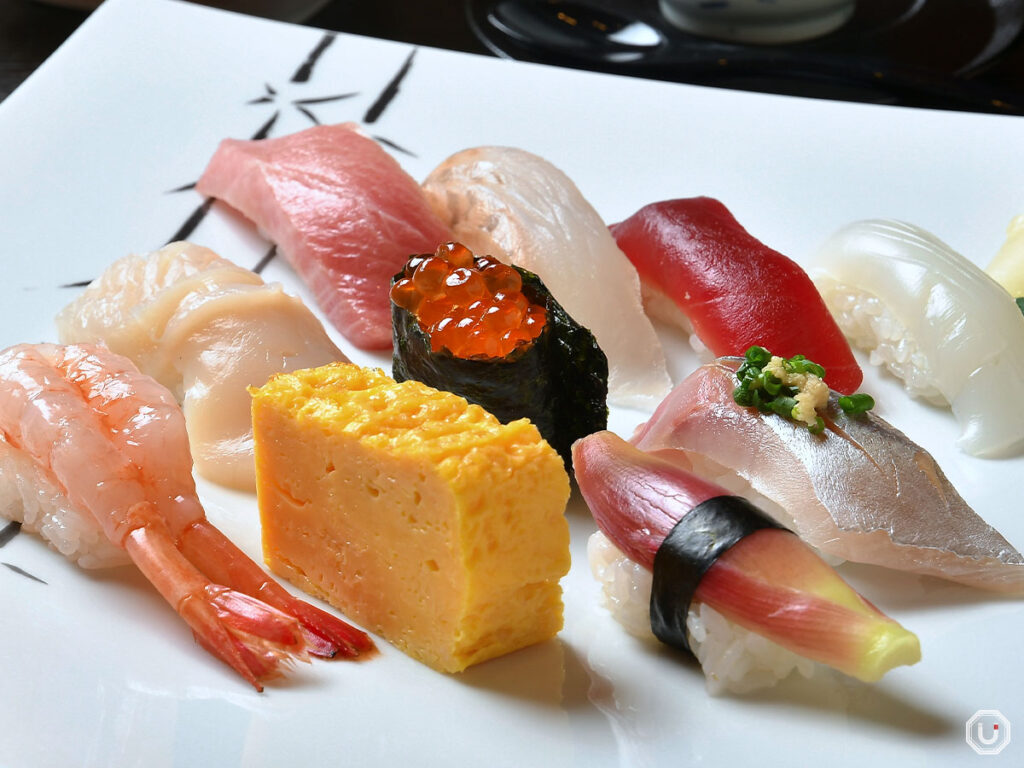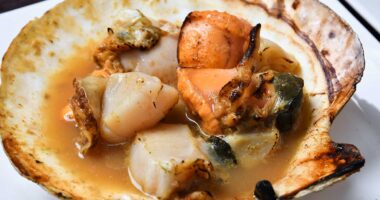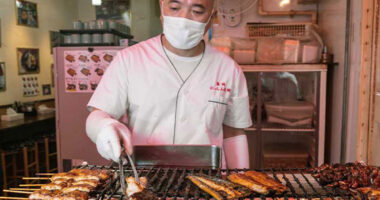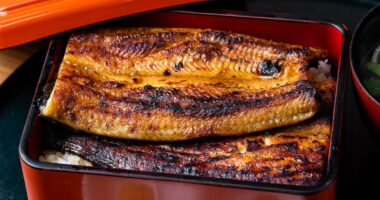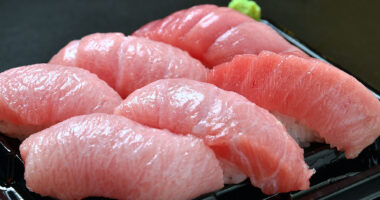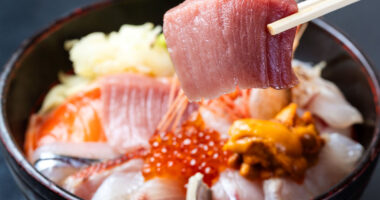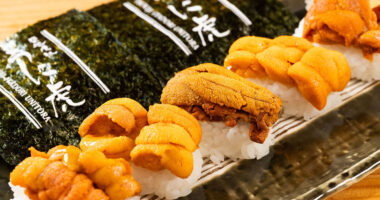The Tsukiji Outer Market is a popular destination for tourists seeking fresh seafood. Located right at the entrance of the market at the Tsukiji 4-chōme intersection is “Tsukiji Sushiiwa Tsukijishiten” (hereafter referred to as “Tsukiji Sushiiwa”), a historic sushi restaurant founded in 1921.
This esteemed restaurant is known for offering traditional Edomae sushi crafted with expert technique, all in a serene, Japanese-style setting.
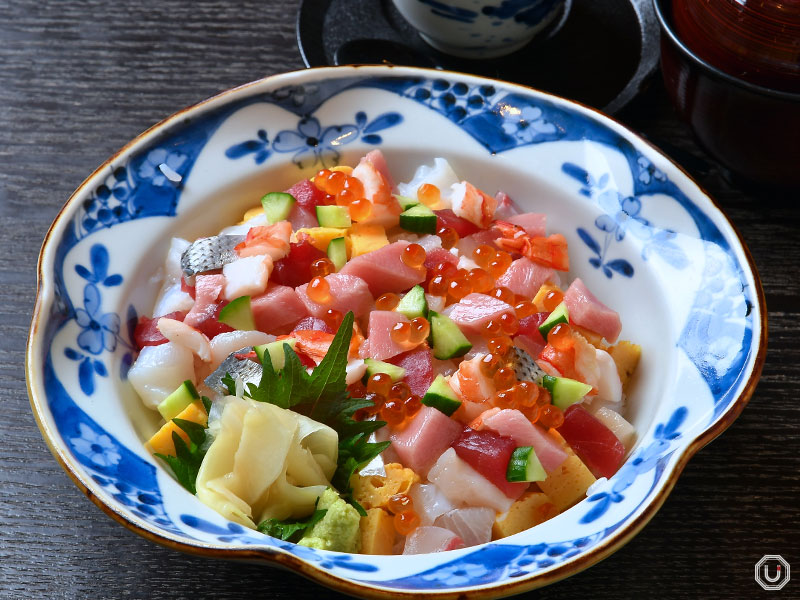
While Tsukiji Sushiiwa operates both a main location and a branch in the Tsukiji area, this article introduces the Tsukiji Branch, where you can enjoy your meal in a spacious, single-floor layout.
Located across from Tsukiji Honganji Temple, it’s marked by a deep green noren (curtain) hanging at the entrance.
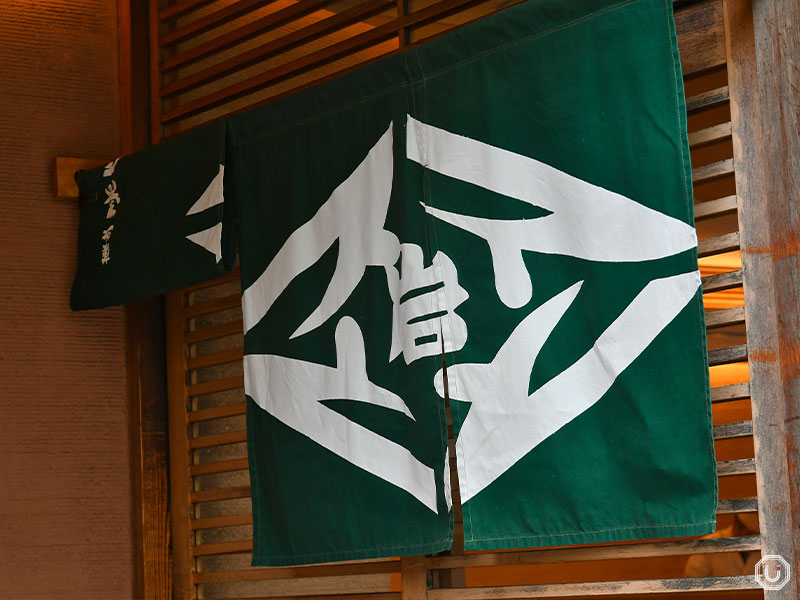
The noren cleverly incorporates the shop’s name with four katakana “su” characters (ス) representing “sushi,” arranged around the central kanji “iwa” (岩, meaning “rock”). The use of four characters adds a subtle nod to the Japanese word for “four” (also pronounced shi), giving the design both style and fun play on words.
Upon entering, your eyes are drawn to the impressive 12-meter-long hinoki cypress counter with its stunning white wood finish.
These counter seats are especially popular, offering diners a prime view of the sushi chefs at work—showcasing the precision, technique, and spirit of traditional Japanese sushi-making.
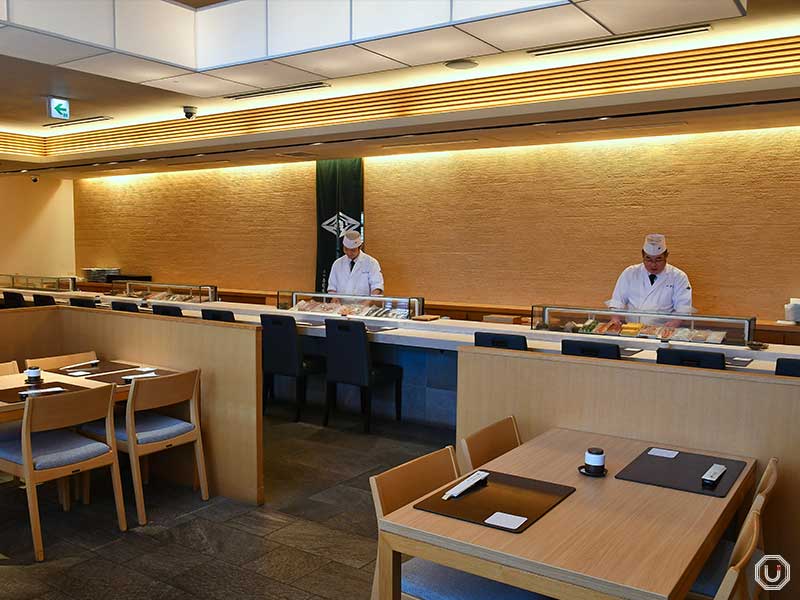
“Sushi Makunouchi”: Signature flavors packed into one bento box!
In Japan, a makunouchi bento refers to a boxed meal that typically combines white rice with a variety of side dishes, and it’s a long-beloved style of lunch enjoyed by people of all ages.
The popular “Sushi Makunouchi” lunch set was created as Tsukiji Sushiiwa’s own unique take on the traditional makunouchi bento—designed to let you enjoy a variety of flavors all at once.
The main feature consists of traditional Edomae sushi like tuna and kohada (gizzard shad). The side dishes offer variety including sashimi, fried foods, simmered dishes, and grilled items, with flavorful miso soup included as a set.
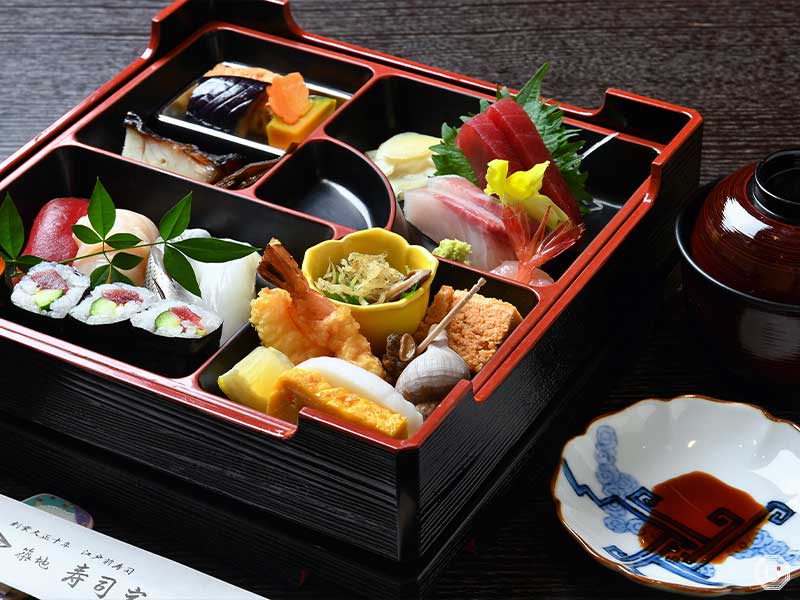
“寿司幕の内,” Sushi Makunouchi 3,300 JPY (tax included)
Sushi made by wrapping vinegared rice and toppings in nori seaweed and cutting them into bite-sized pieces is called makimono or norimaki, and is a standard type of sushi alongside nigiri.
Watching a sushi chef skillfully prepare these rolls at the counter builds anticipation for that first bite.
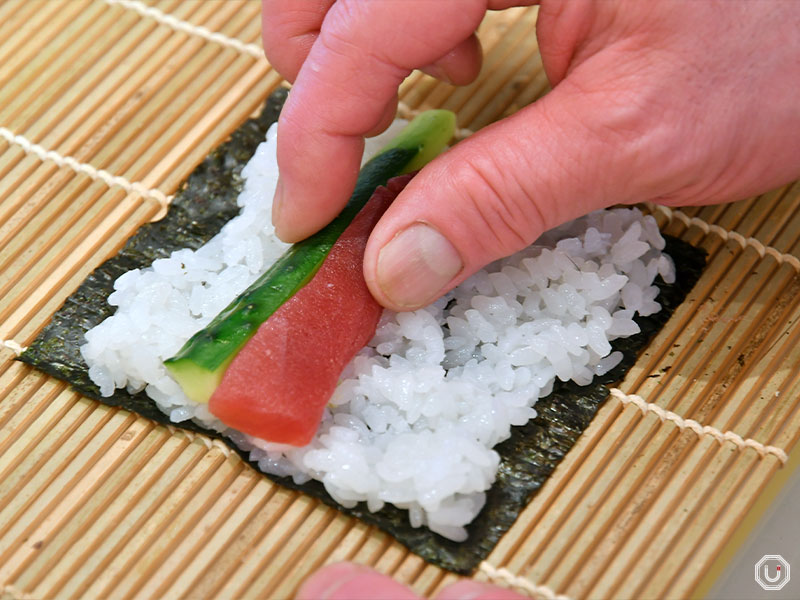
The Sushi Makunouchi contents change based on the season and available ingredients. On the day of our visit, shrimp tempura was included—lightly fried with a crisp batter that complements the plump shrimp inside.
Each item, including the tempura, is cut into easy-to-eat portions—a thoughtful detail that enhances the dining experience.
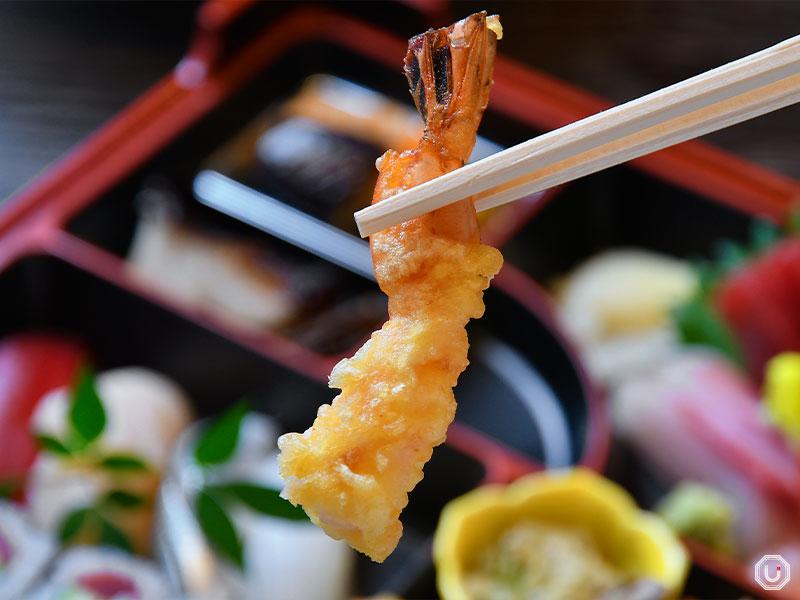
“Seasonal Nigiri”: a beautiful expression of seasonal Edomae sushi
For those looking to fully enjoy Edomae nigiri sushi at the Tsukiji Branch, the weekday-only lunch set “Seasonal Nigiri” is a must-try.
The lineup changes daily, but on this occasion, it included 10 pieces: lean and medium-fatty tuna, flounder, sumi ika (golden cuttlefish), sweet shrimp, scallop, myōga (Japanese ginger), horse mackerel, salmon roe, and tamagoyaki (Japanese omelet). The set also comes with smooth and silky chawanmushi (savory steamed egg custard), miso soup, and a dessert palate cleanser.
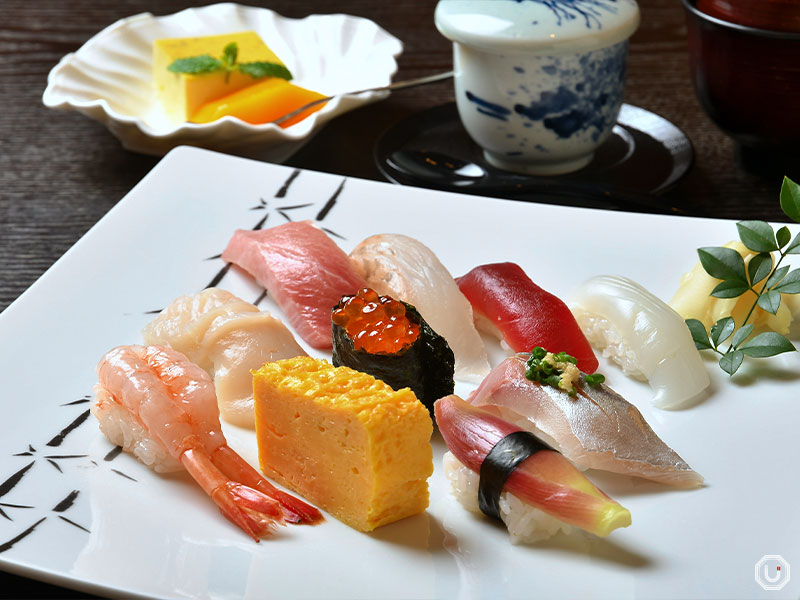
“四季のにぎり,” Weekday lunchtime exclusive Seasonal Nigiri 3,520 JPY (tax included)
The vinegared rice used in sushi is called shari, and each restaurant has its own distinct style. While red vinegar was once the standard for Edo-style sushi, particularly before WWII, Tsukiji Sushiiwa adopted white vinegar early on in the postwar period and has continued using it ever since.
The restaurant’s shari is seasoned with sugar and salt for a gently sweet, refined flavor that pairs beautifully with all types of sushi toppings. Tasting each piece reveals the high level of craftsmanship at Tsukiji Sushiiwa.
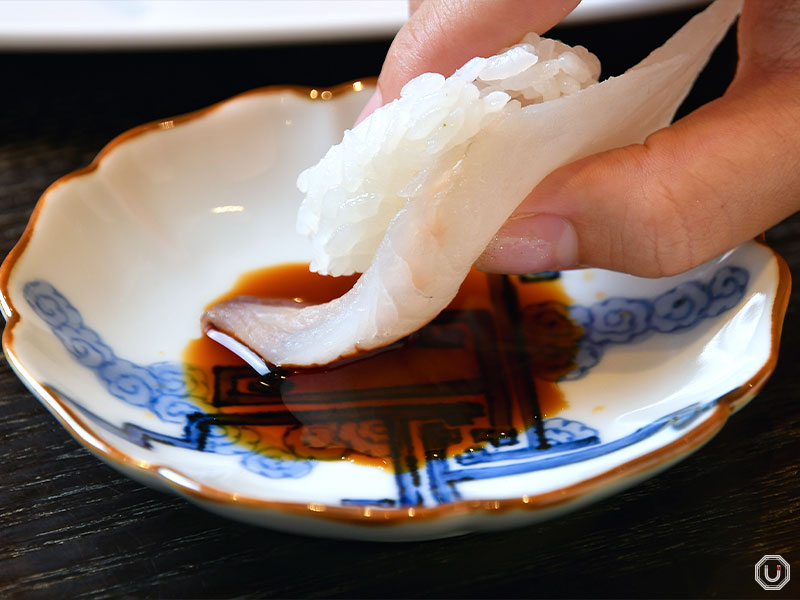
The sushi’s elegant appearance is also part of the restaurant’s identity. Since its founding, Tsukiji Sushiiwa has adhered to the tradition of forming sushi to resemble swimming fish, conveying the freshness of the ingredients.
The sushi pieces, artfully arranged on the plate, evoke the image of small fish gliding through the sea. The sleek, beautiful appearance of the sushi is also a unique aspect of Tsukiji Sushiiwa.
Whether or not you want wasabi inside your sushi can be specified when ordering, and they’ll happily provide it on the side if requested—another example of their attentive service.

“Bara Chirashi”: a colorful, flavorful, and great-value option
Chirashi sushi refers to a dish where a variety of sushi toppings are sliced small and placed on top of vinegared rice. In Edomae-style sushi, this is often called bara chirashi.
At Tsukiji Sushiiwa, their “Bara Chirashi” is not only visually stunning but also more affordable than a full nigiri sushi set. It comes with chawanmushi and miso soup as well.
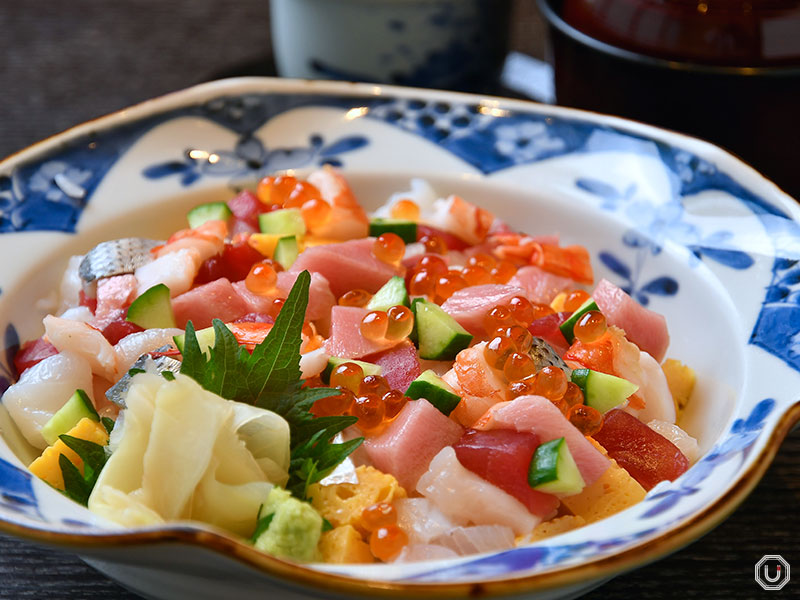
“ばらちらし,” Bara Chirashi (limited quantity) 2,970 JPY (tax included)
The bowl is filled with shari and topped with an assortment of diced sushi toppings arranged in a harmonious, balanced layout.
As with the nigiri, the selection varies by day. On this occasion, it included fatty and lean tuna, kohada, kanpachi (greater amberjack), boiled shrimp, raw octopus, salmon roe, cucumber, and other ingredients, all skillfully assembled in a colorful presentation.
Sometimes oboro (seasoned, flaked white fish) or shiitake mushrooms may be included.
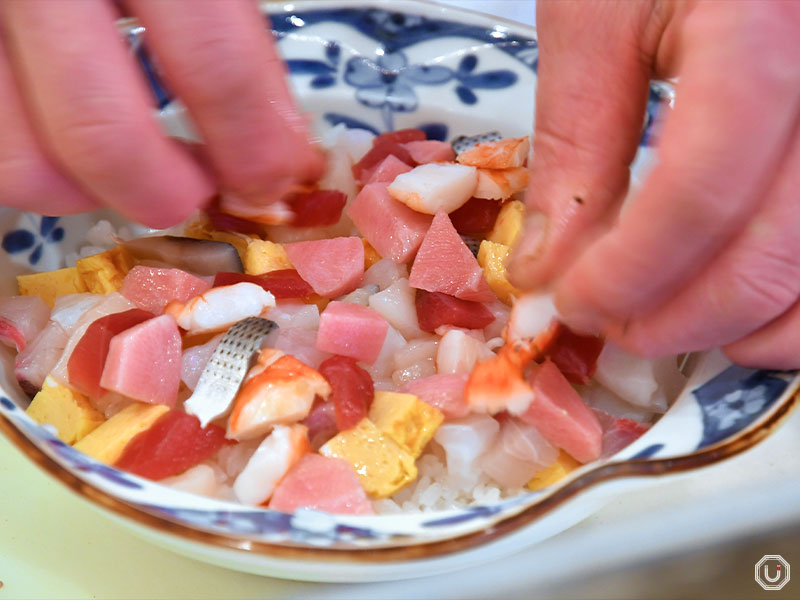
Unlike seafood rice bowls with large toppings, the charm of bara chirashi lies in the ability to enjoy multiple flavors and textures in each bite. With elements like popping salmon roe, chewy octopus and cucumber, kohada, and fluffy tamagoyaki (Japanese rolled omelet), every mouthful brings a new delight.
Spoons are available upon request—just ask the staff.
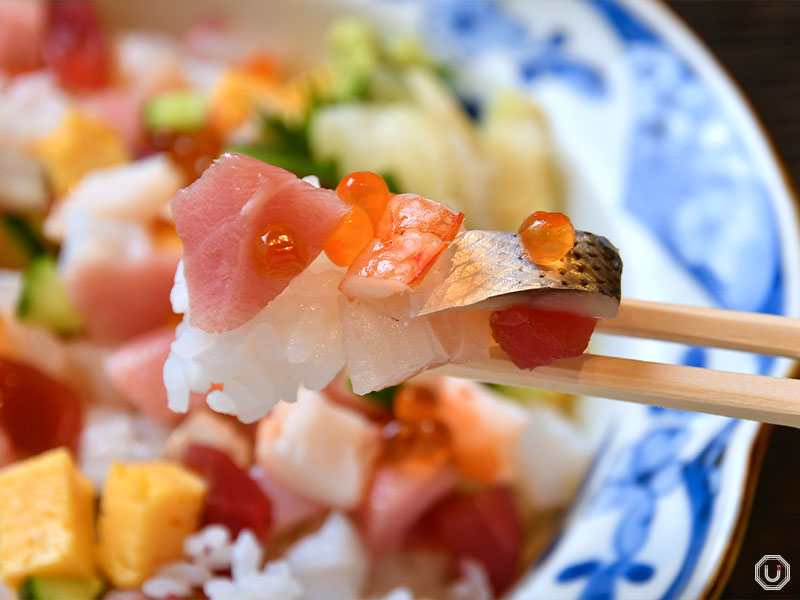
At Tsukiji Sushiiwa, guests are warmly welcomed by servers in kimono.
The calm, elegant interior includes counter seating, table seating, traditional tatami rooms, and sunken kotatsu-style tables. The restaurant is also accessible for strollers and wheelchairs.
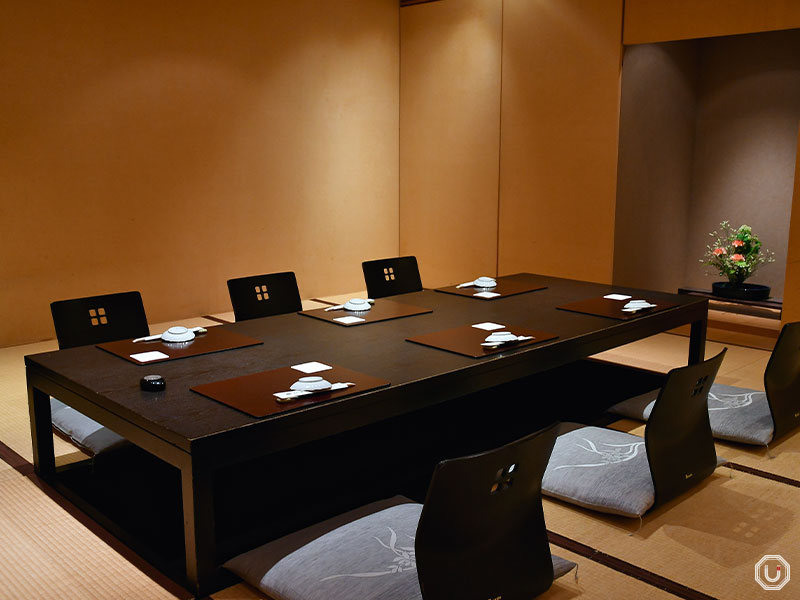
Private dining rooms are available and recommended to book in advance
Besides the set meals introduced here, the restaurant also offers lunch courses featuring sashimi, sushi, seasonal dishes, and fruit desserts. The atmosphere shifts between lunch and dinner service, so visiting in the evening for a different ambiance is also recommended.
Easily accessible from Ginza and Shimbashi, Tsukiji Sushiiwa is a sushi destination worth remembering when you’re craving high-quality Edomae sushi in Tsukiji.
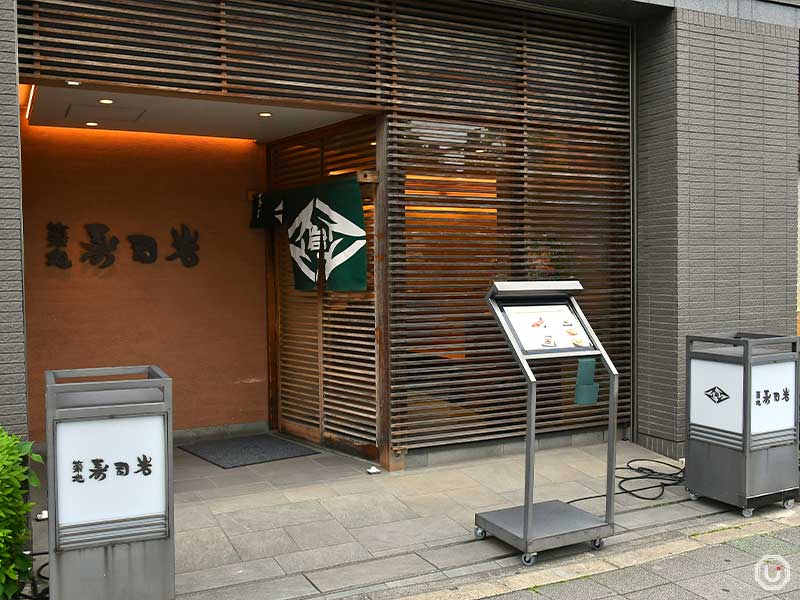
Information
| Store name | 築地 寿司岩 築地支店 Tsukiji Sushiiwa Tsukijishiten |
|---|---|
| Address | 2-15-10 Tsukiji, Chūō-ku, Tokyo
|
| Access |
Tsukiji Station – 1-minute walk from Exit 2
Higashi-Ginza Station – 5-minute walk from Exit 5
Tsukijishijō Station – 6-minute walk from Exit A1
|
| Phone number | 03-3541-5951 |
| Reservations | Accepted Phone number, Ikyu Restaurant, Tabelog, GURU NAVI, Table Check |
| Payment |
|
| Service charge/Table charge | 10% service charge only when using private dining rooms |
| Hours | Mon-Fri. 11:00-14:00(last order 13:30), 17:00-22:00(last order 21:00) Sat-Sun. & nat’l holidays 11:00-21:00(last order 20:00) |
| Holidays | New Year’s holidays |
| Seating | 70 seats 16 counter seats, 14 table seats, 40 tatami room seats |
| Smoking | All seats are non-smoking |
| Official website | https://www.sushiiwa.co.jp/tsukiji/ |
| Other information |
|
*Menu items, prices, and store information are current as of June 2025.
